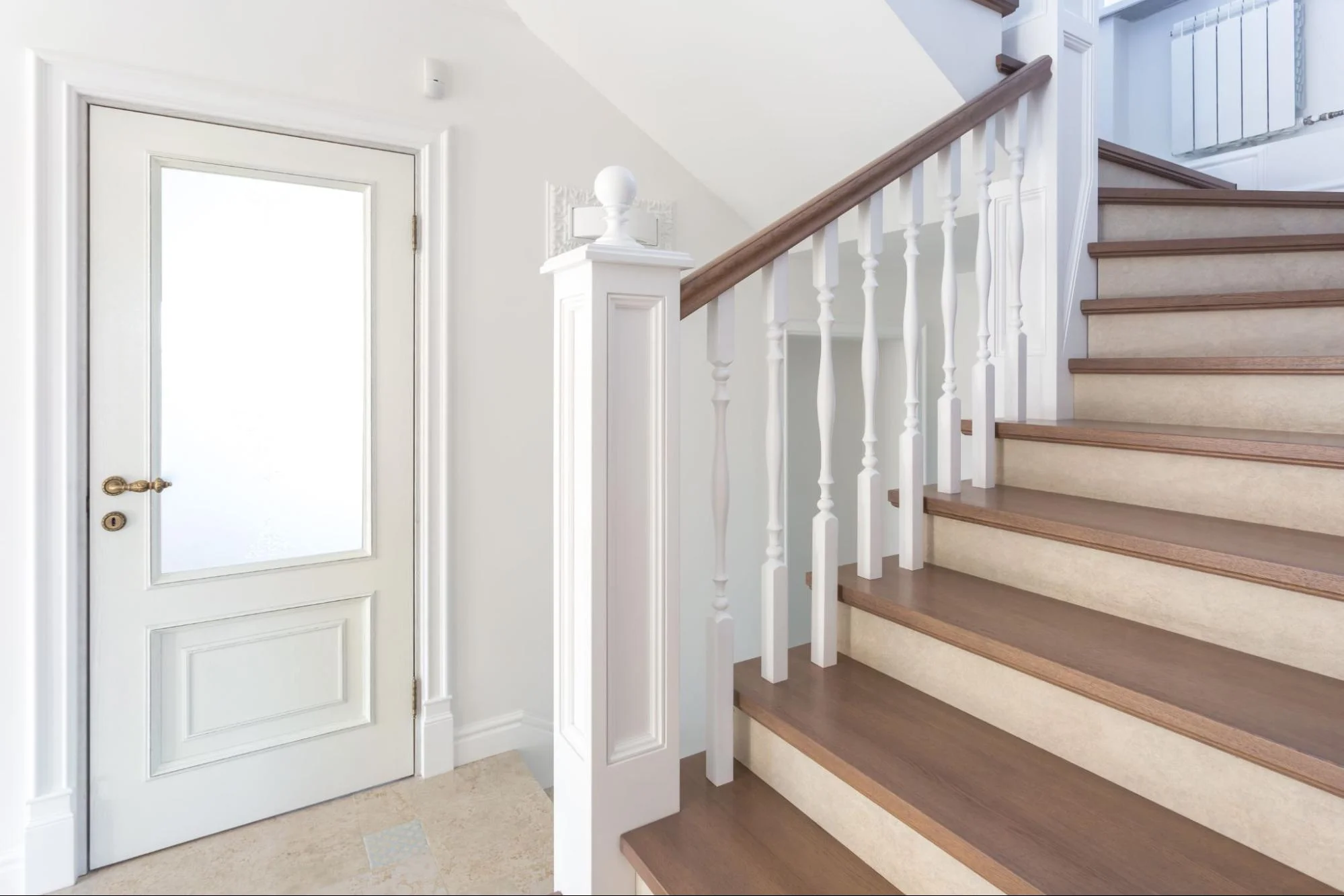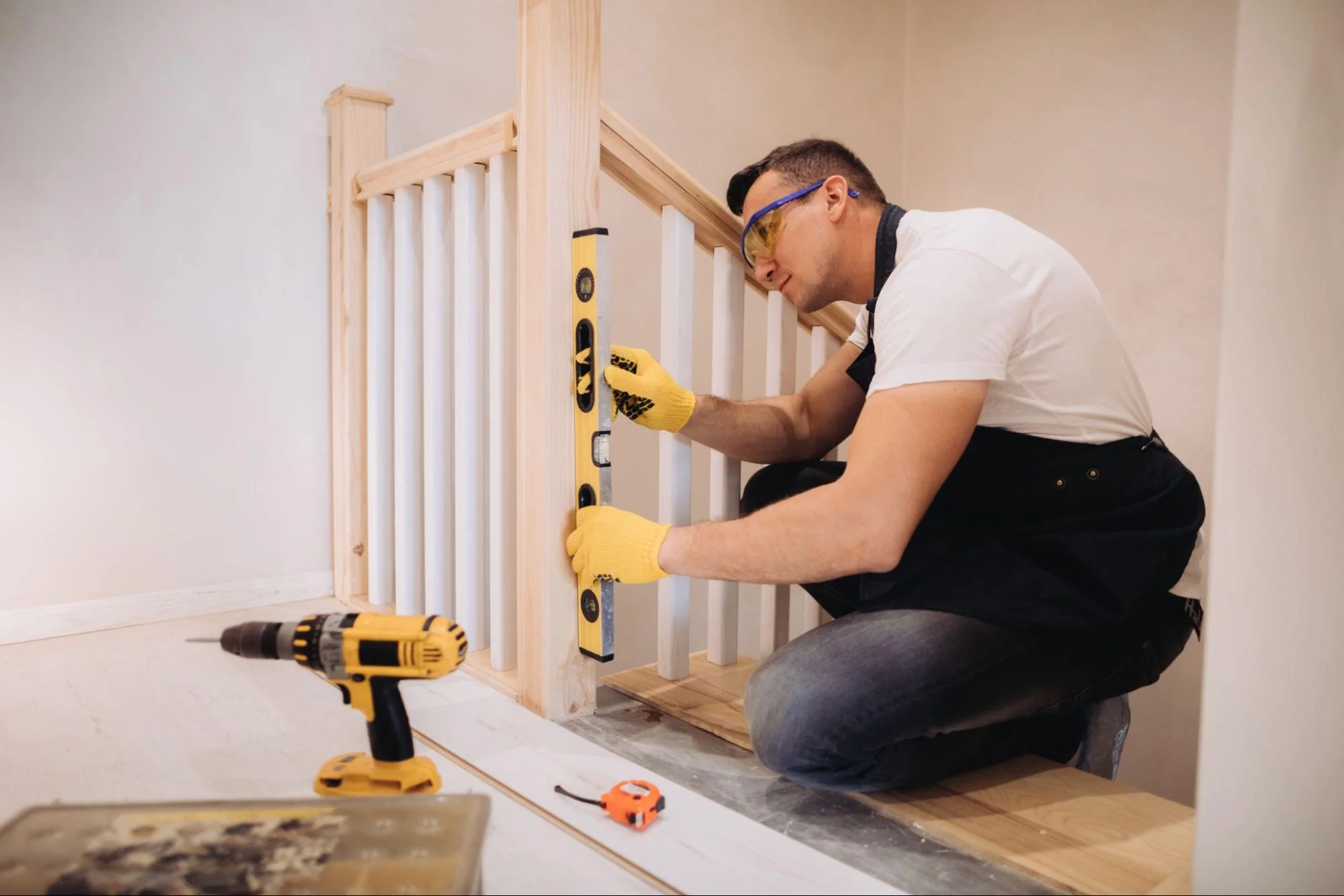
If you’re looking to make your home safer and more accessible, installing home safety features is a great place to start. There are many different types of safety features available, from grab bars and handrails to non-slip flooring and motion-sensor lights. However, installing these features can be a challenge, especially if you’re not experienced with home improvement projects, we’ll provide you with some handyman advice for installing home safety features, so you can make your home safer and more comfortable for you and your loved ones.
Assessing and planning home safety improvements is an important first step before you start installing any safety features. You should evaluate your home’s safety features and identify areas needing improvement. This could include adding grab bars in the bathroom, installing handrails on stairs, or adding non-slip flooring in high-traffic areas. Once you’ve identified the areas that need improvement, you can start planning the installation process. This may involve hiring a handyman or contractor to help you with the installation, or it may be something you can do yourself with the right tools and knowledge.
Installation tips and techniques are also important to consider when installing home safety features. For example, when installing grab bars, it’s important to make sure they’re securely attached to the wall and can support your weight. When installing handrails, you’ll need to make sure they’re at the right height and angle to provide the most support. And when installing non-slip flooring, you’ll need to ensure it’s installed properly to prevent tripping hazards. With the right knowledge and tools, you can install these safety features yourself or with the help of a professional handyman.

When it comes to home safety, it’s important to assess your living space and plan accordingly. By identifying potential safety hazards, prioritizing safety features for different home areas, and selecting appropriate safety and accessibility tools, you can create a safer living environment for yourself and your loved ones.
The first step in assessing and planning home safety improvements is to identify potential safety hazards. This can include anything from loose rugs and cords to inadequate lighting and slippery floors. It’s important to walk through each room of your home and take note of any potential hazards that could lead to falls, burns, or other accidents.
Once you’ve identified potential safety hazards, it’s important to prioritize safety features for different home areas. For example, bathrooms and kitchens are high-risk areas for falls and burns, so installing grab bars and non-slip mats can help prevent accidents. Additionally, ensuring that all stairways have handrails and that walkways are clear and well-lit can also help prevent falls.
Finally, selecting appropriate safety and accessibility tools is crucial for creating a safer living environment. This can include anything from installing wheelchair ramps and stair lifts to adding motion-activated lighting and smart home technology. It’s important to review safety features and modifications that are available and select the ones that best meet your needs.
By reviewing a home safety checklist for seniors and making safety modifications as needed, you can create a safer living environment for yourself and your loved ones. Remember to prioritize safety features for different home areas, identify potential safety hazards, and select appropriate safety and accessibility tools to create a safer, more accessible home.

When it comes to installing home safety features, there are a few tips and techniques that can help ensure a successful and safe installation. For example, when installing grab bars, it’s important to make sure they’re securely attached to the wall and can support your weight. When installing handrails, you’ll need to make sure they’re at the right height and angle to provide the most support. And when installing non-slip flooring, you’ll need to ensure it’s installed properly to prevent tripping hazards. With the right knowledge and tools, you can install these safety features yourself or with the help of a professional handyman.
One of the most effective ways to secure your home is by installing a security system. A security system can help deter burglars and alert you and the authorities in case of a break-in. When installing a security system, it’s important to consider the layout of your home and the most vulnerable areas. You can also install motion-sensor lights around the perimeter of your home to deter intruders and increase visibility at night.
Installing grab bars and handrails can help enhance mobility and prevent falls, especially in areas like the bathroom and near stairs. When installing grab bars and handrails, it’s important to choose the right materials and ensure that they are securely fastened to the wall. You can also consider adding non-slip mats to areas that are prone to moisture to further enhance safety.
If you have aging residents in your home, it’s important to make modifications that can help them maintain their independence and safety. This can include widening doorways, installing ramps, and adding a walk-in tub. When making these modifications, it’s important to consider the needs and preferences of the resident and ensure that the modifications are made safely and effectively.
Overall, installing home safety features can help enhance the safety and security of your home. By following these tips and techniques, you can ensure a successful and safe installation of these features.
When it comes to installing home safety features, it’s important to take a comprehensive approach to ensure that your home is safe and secure. From grab bars to non-slip rugs, there are a variety of safety features that can help prevent falls and accidents in the home.
One of the best ways to get started is to conduct a home safety check. This will help you identify potential hazards and areas that may need improvement. You can use a home safety checklist, to guide you through the process.
Once you’ve identified areas that need improvement, it’s important to hire a qualified handyman to help with the installation process. A handyman can assist with everything from installing grab bars and handrails to widening doorways and installing non-slip flooring.
It’s also important to keep up with regular home maintenance tasks, like gutter cleaning and window repair, to prevent potential hazards from developing. By taking a proactive approach to home safety, you can help ensure that your home is a safe and secure environment for you and your loved ones. For expert handyman services, Kaminskiy Care and Repair is your go-to partner. We have the experience to tackle your home repair projects giving you satisfaction and peace of mind. Contact us today
Windows are one of the most vulnerable points of entry for intruders. One effective method to secure windows against break-ins is to install one-way privacy film on your windows. This film allows light in and lets you see outside, but people outside only see a dark window or a mirror reflection. Most of these films only work during the day, so make sure to close your blinds at night. Installation is easy and affordable.
Burglar-proofing your home doesn’t have to be expensive. One budget-friendly option is to reinforce your doors with a door security bar. These bars are easy to install and prevent intruders from forcing open your doors. Another budget-friendly option is to install window locks on all windows. Window locks make it more difficult for intruders to gain entry to your home.
When you’re away from home, it’s important to take steps to protect your house. One effective method is to install a smart security system that allows you to monitor your home remotely. You can receive alerts if there is any suspicious activity and take action if necessary. Another step you can take is to have a trusted neighbor or friend keep an eye on your home while you’re away.
When setting up a home security system, there are several key considerations to keep in mind. First, you need to determine your budget and what type of system you want to install. Do you want a traditional alarm system or a smart security system? Second, you need to consider the size and layout of your home. Do you need cameras in every room or just at the entrances? Finally, you need to consider the level of monitoring you want. Do you want to monitor your home yourself or have a professional monitoring service do it for you?